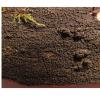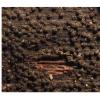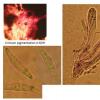
18-12-2025 21:17
Pol DebaenstThe identification took me to Byssonectria deformi

15-12-2025 07:09
 Danny Newman
Danny Newman
indet. Rutstroemiaceae sp. on unk. fallen leavesMc

19-12-2025 10:10
Patrice TANCHAUDBonjour, récolte réalisée en milieu dunaire, a

18-12-2025 17:23
 Bruno Coué
Bruno Coué
Bonjour,je serais heureux d'avoir votre avis sur c

18-12-2025 18:07
Margot en Geert VullingsThese plumes were found on rotten wood.They strong

17-12-2025 18:35
 Michel Hairaud
Michel Hairaud
Bonjour à tous/Hi to everyone I am passing along

15-12-2025 15:48
 Danny Newman
Danny Newman
Melanospora cf. lagenaria on old, rotting, fallen

15-12-2025 15:54
 Johan Boonefaes
Johan Boonefaes
Unknown anamorph found on the ground in coastal sa

15-12-2025 21:11
 Hardware Tony
Hardware Tony
Small clavate hairs, negative croziers and IKI bb
? Lophiotrema with crimson interior in KOH
Alex Akulov,
20-12-2015 13:27
 Dear friends
Dear friendsCan you help me to identificate one Ascomycete fungus with very distinct macromorphology? I think it may be Lophiotrema sp., but have no idea what same. May be you already familiar with it.
Fructification formed on the rotten decorticated wood of foliage tree (cf. Quercus) in the maple-linden-oak forest).
Pseudothecia 315-430 µm in diam., black, solid, thick-walled, with bases immersed in the thin black stroma, which cover all substratum surface.
In the mature ascomata the upper part of pseudothecia splits and exposes the brown interior. In KOH ascomata interior distinctly stay crimson.
Asci bitinicate, av. 95 × 14,5 µm, wider at the top and gradually tapering to the stipe. Pseudoparaphyses abundant, branched, filiform. Ascospores mostly two-seriate, fusiform, slightly curved, with (3-) 5-7 transverse septae, with distinctly inflated submedian cell, (22-) 23,6-26,6 × 4,4-5,7 µm (in the broadest part). Ascospores at most hyaline, but some brownish were observed too.
Photos turned out not very successful, but allow you to see the main features.
Grateful before for help,
Alex
Guy Marson,
21-12-2015 01:02
Re : ? Lophiotrema with crimson interior in KOH
Hi Alex,
You may take a look in the Roussoellaceae if your species has crimson colored ostioles and spores with a +/- big gel sheet.
Cheers,
Guy
You may take a look in the Roussoellaceae if your species has crimson colored ostioles and spores with a +/- big gel sheet.
Cheers,
Guy



